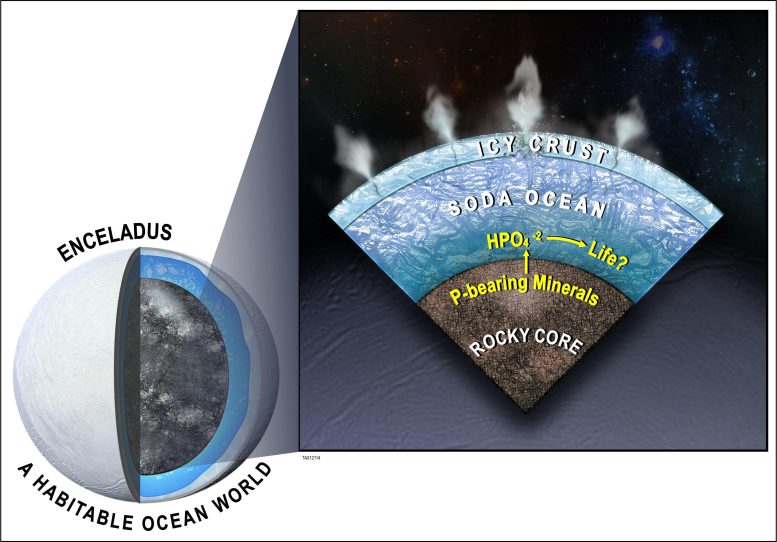In these detailed infrared images of Saturn’s icy moon Enceladus, reddish areas indicate fresh ice that has been deposited on the surface. Credit: NASA/JPL-Caltech/University of Arizona/LPG/CNRS/University of Nantes/Space Science Institute.
The subsurface ocean of Southwest Research Institute found new evidence of a key building block for life in the subsurface ocean of Saturn’s moon Enceladus. According to new modeling, Enceladus’ ocean should be quite rich in dissolved phosphorus, a crucial ingredient for life.
“Enceladus is one of the prime targets in humanity’s search for life in our solar system,” said Glein, a leading expert in extraterrestrial oceanography. He is a co-author of a paper recently published in the journal Proceedings of the National Academy of Sciences (PNAS) describing this research. “In the years since
SwRI Lead Scientist Dr. Christopher Glein contributed to new findings that phosphorus in the form of orthophosphate (e.g., HPO4-2) is likely abundant in the subsurface ocean of Saturn’s moon Enceladus. A soda or alkaline ocean (containing NaHCO3 and/or Na2CO3) inside of Enceladus interacts geochemically with a rocky core. Modeling indicates that this interaction promotes the dissolution of phosphate minerals, making orthophosphate readily available to possible life in the ocean. Because phosphorus is an essential ingredient for life, this finding bolsters mounting evidence for habitability within this small Saturnian moon. Credit: Southwest Research Institute



